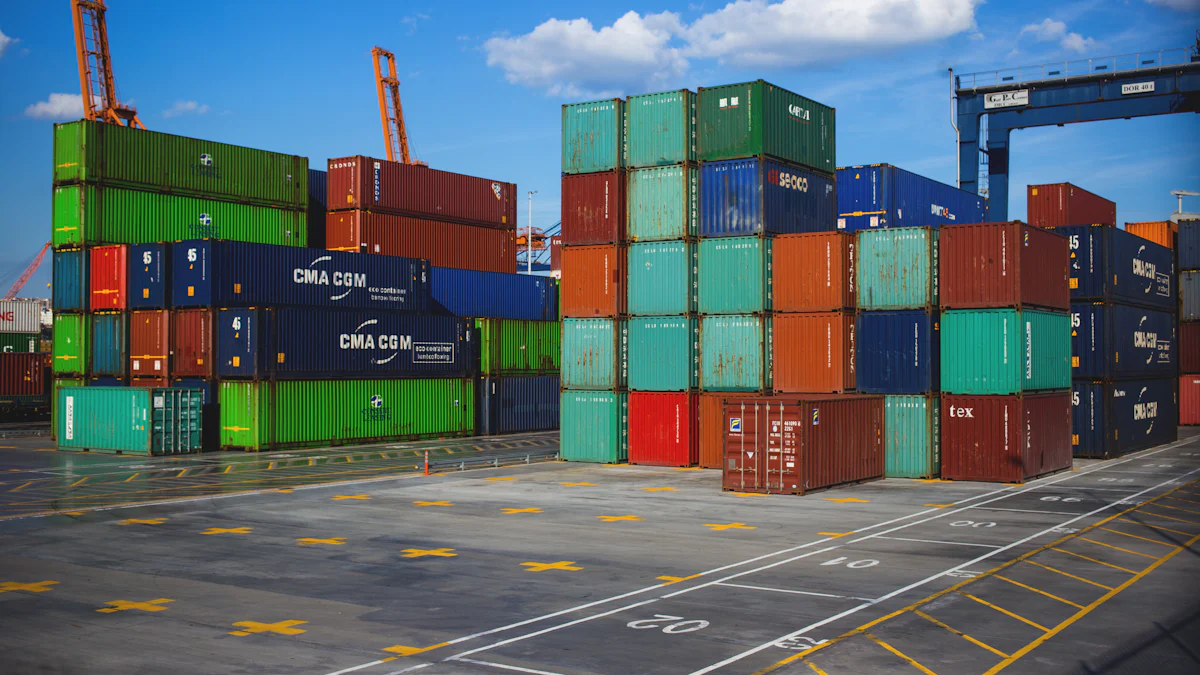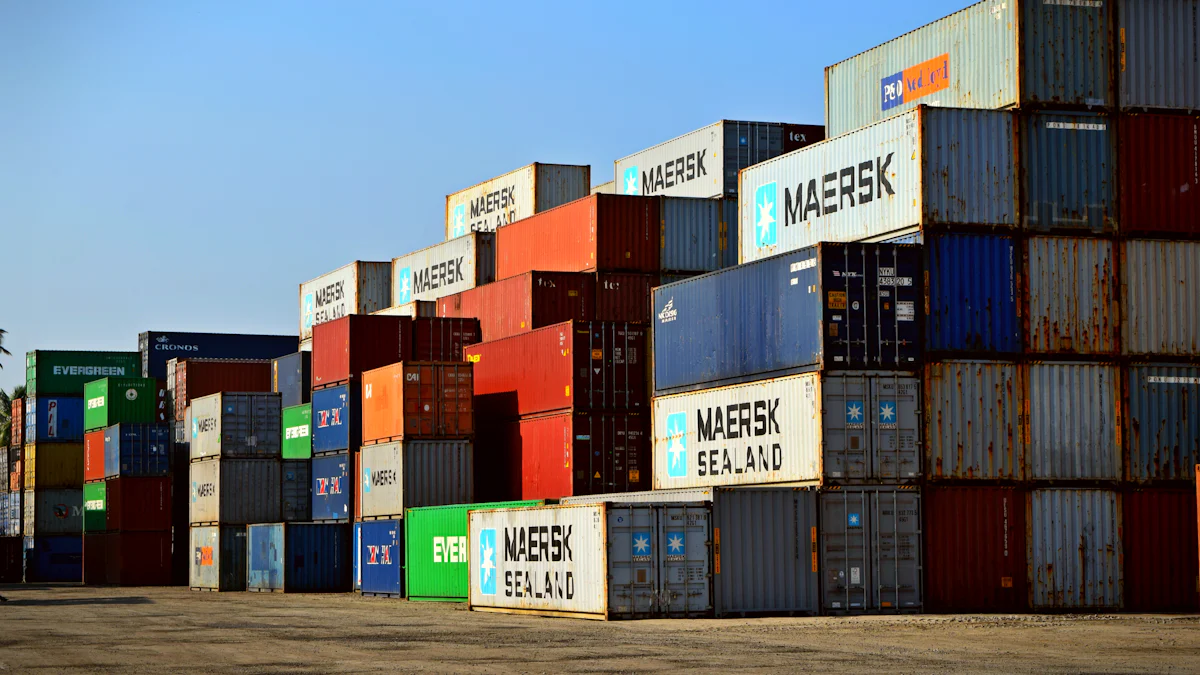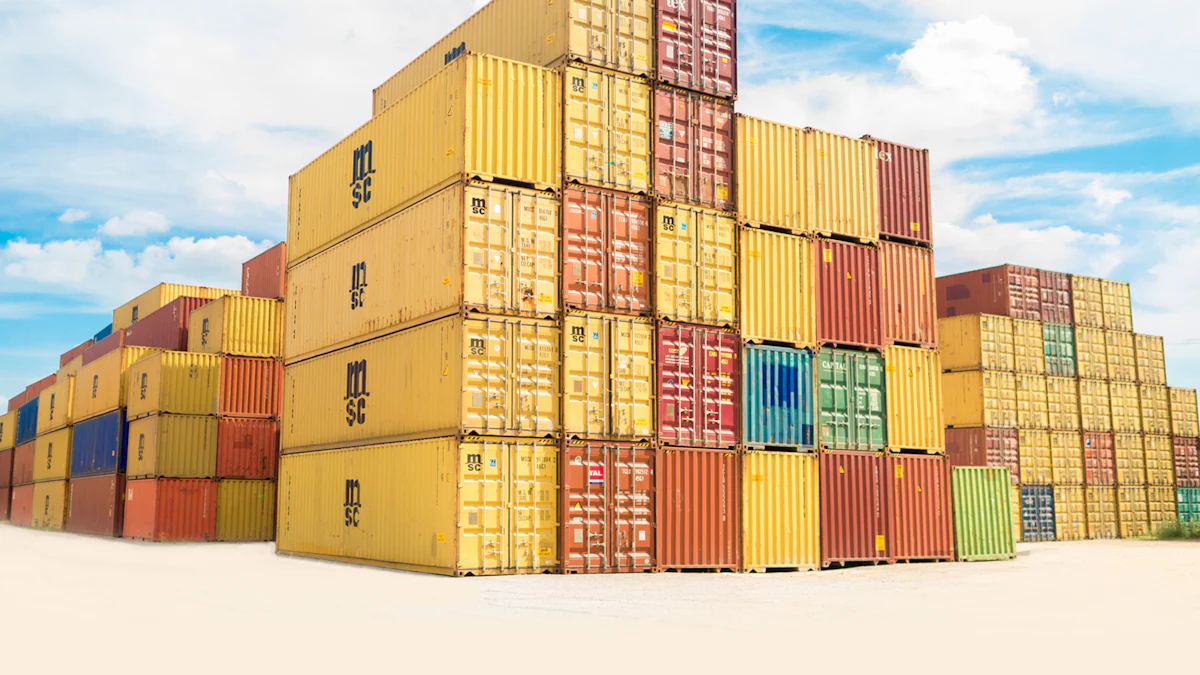Shipping Containers: Affordable Options for Ocean Freight

Shipping containers have become a cornerstone of global trade, transporting about 90% of the world's goods. You can find affordable options for ocean freight, but prices vary based on size, condition, and market demand. For instance, a new 40-foot container might cost between $1,500 and $4,000. Choosing the right container is crucial for cost efficiency. Consider factors like size and condition to ensure you get the best value. By making informed decisions, you can optimize your shipping costs and enhance your business's bottom line.
Key Takeaways
Shipping containers are vital for global trade, transporting about 90% of the world's goods; choosing the right container can significantly impact your shipping costs.
Understand the different types of containers available, such as standard dry, refrigerated, and specialized containers, to select the best option for your cargo needs.
Consider factors like size, condition, and market demand when purchasing a shipping container to ensure you get the best value for your investment.
Inspect used containers thoroughly for rust and damage to avoid unexpected repairs and ensure longevity.
Explore various purchasing options, including online marketplaces and local dealers, to find affordable shipping containers that meet your requirements.
Be aware of local zoning laws and regulations regarding shipping containers to avoid legal issues and ensure compliance.
Plan for transportation and delivery of your container, considering whether to use supplier services or handle it independently for cost efficiency.
Types of Shipping Containers

When it comes to shipping containers, you have several options to choose from, each designed to meet specific needs. Let's explore the different types available:
Standard Dry Containers
Standard dry containers, also known as general-purpose containers, are the most common type you'll encounter. These containers are fully enclosed and weatherproof, making them ideal for transporting a wide range of goods. They come with a rigid roof, sidewalls, and floor, ensuring your cargo stays protected from the elements. You can even adapt these containers with liner bags or flexi-tanks for shipping certain types of liquid or dry bulk cargo.
Refrigerated Containers
If you're dealing with perishable goods, refrigerated containers, or "reefers," are your best bet. These containers maintain a controlled temperature environment, ensuring that your products stay fresh throughout the journey. Whether you're shipping fruits, vegetables, dairy, or pharmaceuticals, reefers provide the necessary conditions to preserve the quality of your goods.
Specialized Containers
For unique shipping needs, specialized containers offer tailored solutions:
Flat Rack Containers: Perfect for oversized items like heavy machinery or construction materials. With only two short sides and no top, they provide ultimate versatility for loading and unloading.
Open Top Containers: Ideal for cargo that is too tall to fit through standard doors. These containers allow you to load goods from the top, making them suitable for bulky items.
Open-side Containers: These containers offer full-side access, simplifying the handling of awkwardly shaped cargo. They're particularly useful in industries dealing with oversized or delicate goods.
Half-height Shipping Containers: Designed for heavy and dense bulk cargo, such as coal or stones. Their low center of gravity makes them stable and robust enough for rough industrial environments.
Transportable Tanks: Made from strong steel or anti-corrosive materials, these tanks are perfect for storing and transporting liquid materials safely.
Each type of container serves a specific purpose, so choosing the right one can significantly impact your shipping efficiency and cost-effectiveness.
Factors Affecting the Cost of Shipping Containers
When you're looking to buy shipping containers, several factors can influence the price. Understanding these elements can help you make a more informed decision and potentially save money.
Size and Dimensions
The size of a shipping container plays a significant role in its cost. You might think smaller containers are always cheaper, but that's not necessarily true. Prices can fluctuate based on supply and demand. For instance, a 20-foot container might be more expensive than a 40-foot one if there's a higher demand for the smaller size. Always consider your specific needs and compare prices across different sizes to find the best deal.
Condition (New vs. Used)
The condition of the container is another crucial factor. New containers often come with a higher price tag. If you're on a tight budget, used containers can be a great alternative. They typically cost 30-50% less than new ones. However, it's essential to inspect used containers thoroughly. Look for signs of rust, damage, or structural issues to ensure you're getting a container that will serve your needs without unexpected repairs.
Market Demand and Location
Market demand and location can also impact container prices. In areas where shipping containers are in high demand, prices tend to rise. Conversely, in regions with an oversupply, you might find better deals. Additionally, the cost of transporting the container to your desired location can add to the overall expense. Consider arranging for pickup from a nearby depot to save on delivery costs. Always keep an eye on market trends and be flexible with your location to take advantage of the best prices.
By understanding these factors, you can navigate the market more effectively and secure a shipping container that fits your budget and requirements.
Where to Find and Purchase Shipping Containers

Finding the right shipping container for your needs can be a straightforward process if you know where to look. Here are some options to consider:
Online Marketplaces
Online marketplaces offer a convenient way to browse and purchase shipping containers from the comfort of your home. Websites like the Online Container Marketplace provide a platform where you can buy and sell over 11 types of shipping containers. These platforms often offer containers in various conditions at wholesale rates, making it easier to find affordable options. Before purchasing, check the zoning laws in your state to ensure compliance. With just a few clicks, you can compare prices and find containers that match your requirements.
Local Dealers and Suppliers
Local dealers and suppliers can be a great resource when looking for shipping containers. Companies like Any Way You Want It Storage offer a range of new and used containers to fit your needs. Visiting a local dealer allows you to inspect the containers in person, ensuring you get a quality product. Plus, you can receive expert guidance on selecting the right container for your project. Local suppliers may also offer delivery services, saving you the hassle of arranging transportation.
JUSDA's Role in Supply Chain Solutions
JUSDA plays a significant role in providing supply chain solutions, including the procurement of shipping containers. As a global supply chain service provider, JUSDA offers comprehensive logistics and supply chain management solutions. With a robust network and advanced technologies, JUSDA can help you find the right shipping container for your needs. Their services include efficient ocean shipping solutions, ensuring your containers are delivered on time and within budget. By leveraging JUSDA's expertise, you can optimize your supply chain operations and reduce costs.
Exploring these options will help you find the best shipping container for your needs. Whether you choose an online marketplace, a local dealer, or JUSDA's supply chain solutions, you'll be well-equipped to make an informed decision.
Tips for Buying a Shipping Container
When you're ready to buy a shipping container, a few tips can help you make the best choice. Let's dive into some key considerations.
Inspection Guidelines
Before purchasing, inspect the container thoroughly. Look for any signs of rust, dents, or structural damage. Check the doors and seals to ensure they close properly. A well-maintained container will protect your goods and last longer. If possible, bring along a professional inspector to assess the container's condition. They can spot issues you might miss and provide peace of mind.
Delivery and Transportation Options
Once you've chosen a container, think about how you'll get it to your location. Many suppliers offer delivery services, which can save you time and hassle. However, if you prefer to handle transportation yourself, consider renting a flatbed truck. Make sure the route to your site can accommodate the container's size. Also, plan for unloading. You might need a crane or forklift, depending on the container's weight and your site's setup.
Legal and Regulatory Considerations
Before placing a shipping container on your property, check local zoning laws and building codes. Many areas require a permit to ensure the container meets safety and community standards. Non-compliance can lead to fines or even removal of the container. Contact your local government office to learn about the necessary approvals. It's better to handle these details upfront than face legal issues later.
By following these tips, you can confidently purchase a shipping container that meets your needs and complies with regulations. Happy shipping!

JUSDA Solutions
To provide you with professional solutions and quotations.
Finding the right shipping container can be a game-changer for your business. By understanding the types of containers and factors affecting their cost, you can make informed decisions that align with your budget and needs. Whether you opt for a new or used container, weigh the pros and cons carefully. New containers offer durability, while used ones provide great value. Explore your options, do your research, and plan ahead. This approach ensures you choose a container that meets your requirements and enhances your shipping efficiency. Happy exploring!
See Also
Exploring Sea Freight Innovations for 2024 and Beyond
Affordable Transportation Management: A Budget-Friendly Approach
Understanding Supply Chain Cost Optimization Strategies
